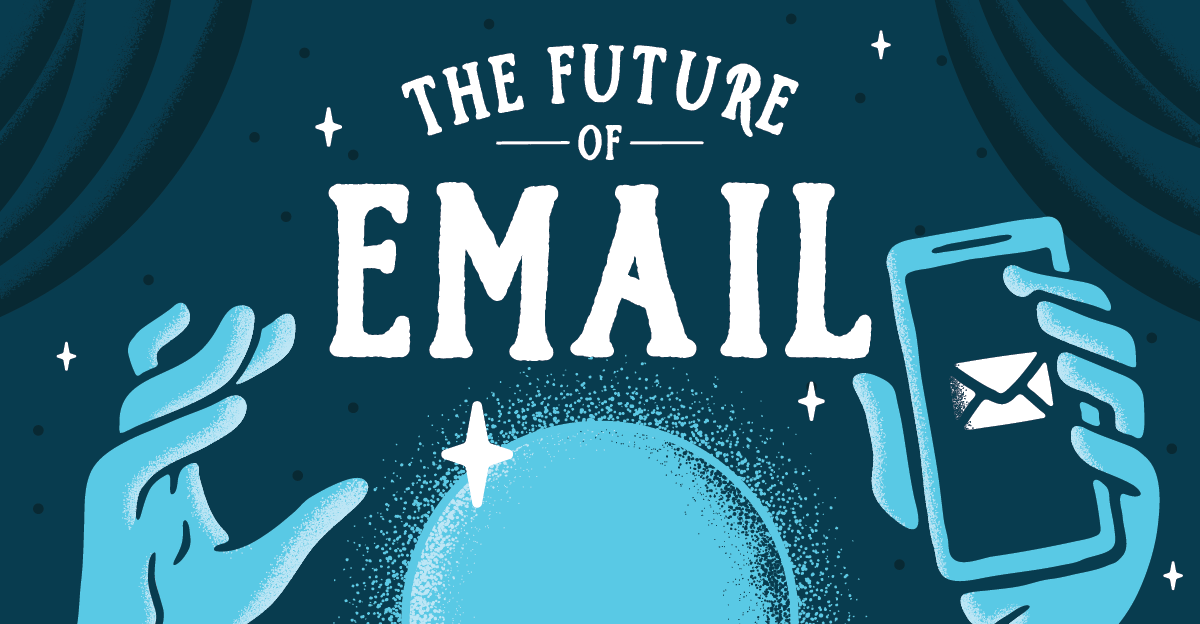The New Age of Email

Email marketing is often misunderstood. When people ask me what I do and I tell them I’m an email marketing specialist, the first (and most frequent) response I get is “Oh, so you send all those spam emails? I hate you.” Or “Oh, so you just send emails all day? That’s easy. I wish that’s all I had to do.”
This is annoying for a number of reasons, but mostly because it seems that no one really appreciates (or understands) the effort that goes into making a good email.
We live in a time of rapid growth and innovation. Take AI for example, which has completely changed the way we approach everything from social listening to media buying. New tech is transforming everything digital.
Can that be said for email as well?
In a word, yes.
Although email is notoriously archaic when it comes to certain aspects — like table-based HTML or, dare I say it, Outlook — times are changing.
As the world evolves, so does email. Here’s what’s on the horizon for our industry, from inbox concierges to interactivity and everything in between.
Email UX is going to get harder, but also more important.
The Internet of Things is upon us, which means the motto “less is more” doesn’t always apply. Every day, there are more types of phones, more tablet sizes, more ways to access your inbox. What does that mean for email marketers? A lot more potential rendering issues.
Email currently lives in a primitive HTML-structured world, but with the amount of technological innovation around us, we’re going to have to adapt. Take voice technology. Email marketers won't just need to think about how an email looks, but how it sounds. Are all the words in this email legible to a voice assistant? Can the email stand on its own, even without its visual components?
New tech requires new approaches.
Right now, voice tech and email integration isn’t very advanced. All voice assistants can currently do is “read, reply, delete, archive and skip” emails. However, the growing ability of voice assistants may bring advancements to email as well.
Potential integrations or downloadable skills could allow your assistants to browse the contents of your email and alert you to deals they’ve learned you find interesting. If, for example, you were searching for pants online last week and J. Crew just emailed you 20% off pants, your voice assistant can say “Hey, you may find this deal from J. Crew interesting.”
In addition to voice technology, wearable devices are also growing in popularity. These devices, like the Apple Watch, only display text emails, so it’s important that your text-only emails are just as strong as your image-based ones. (Please pay attention to the fact that I said image-based, and not image-only. Image-only emails only deserve to be in one place, and that’s the trash.)
Machine learning will redefine what a “campaign” really is.
One-size-fits-most email campaigns will be a thing of the past. Way back when, marketers would make media buys on specific webpages to get to users, but evolved to start targeting specific people, regardless of where they were. Email will follow that same path.
We’ll be able to put together creative for a “campaign,” and through AI and machine learning, we’ll be able to create personalized copy, content and optimized send times for each individual subscriber, based on subscriber data. This can range from one individual’s browsing history to characteristics of other users who exhibited similar behavior.
Interactivity isn’t going away — it’s growing to mailable microsites.
Interactivity and the importance thereof will continue to grow, and so will (hopefully) email client support. We’ll be moving from email simply being the gateway to websites, to becoming the destination. Emails will function as individual microsites where people will be able to do things like make purchases, browse content, or watch videos — all without leaving their inbox.
Right place, right time, right medium.
We’ve all heard the golden standard of email: send the right message, to the right person, at the right time. But it’s time we add in the right medium to the list.
As much as we all love email, we have to understand it’s not always the best way to reach people. Email is a great vehicle for sales notifications or abandoned cart messages, but users probably prefer to use a chatbot to talk to support, or get a text message to let them know their flight is delayed. Understanding the nuances of these types of communications will not only create better relationships between marketers and users, but it’ll also allow us to send better, more helpful emails.
Machine learning part II: the inbox.
Nothing will be changing as much as the inbox. The appearance of so-called virtual inbox concierge services will change how users will receive and view their emails.
Gone will be the days where marketers simply try to avoid the spam filter — now we’ll have to work around AI to get to the top of the inbox. These services will be able to learn how individuals interact with emails in their inbox and sort messages accordingly. Think Gmail's promotions tab, where promotional emails are already sorted out from your other content, but on steroids.
More personalized inboxes mean more things for marketers to consider.
The changing of inbox use doesn’t stop there. There’s also an influx of new email platforms and clients. People are no longer simply relying on the email clients that come standard with their devices — they’re moving to more personalizable platforms (such as Superhuman, a platform so exclusive, you need a member-referral to get access) to use as their inboxes.
But it won’t just be the inboxes that’ll be customizable — there’ll be a whole host of plugins you’ll be able to add not just to your browser, but to your actual inbox. What will those look like? Will they be able to draft complete, human-sounding replies? Will they be able to sort your emails by different types of promotions and display them based on relevance to you? The ability to add these to your inbox will make it significantly harder for marketers to actually reach you, rather than get caught by your inbox and shuffled away.
Personalization continues to matter, but data privacy is adding a new wrinkle.
Putting someone’s first name in an email does not count as personalization, and people are catching on. Personalization is going to grow in a big way, but how marketers will execute it is still up in the air. How do you take it beyond a preference center? How do you use subscriber data to personalize on a large scale? How do you keep your messages authentic?
Having a full view of each subscriber through various touchpoints allows you to target each person individually. But new data restrictions may make that more difficult. Additionally, it’s likely that subscribers will eventually be able to opt out of all tracking, including opens, clicks, device type, etc. This will make it much harder for marketers to understand their audience and serve them content based on behavior.
How soon will all of these changes hit the email industry? Only time will tell. But we know it’s coming, so buckle up and get ready. It’s gonna be fun.

Comments
Add A CommentThis is really a great stuff for sharing. Keep it up .Thanks for sharing.